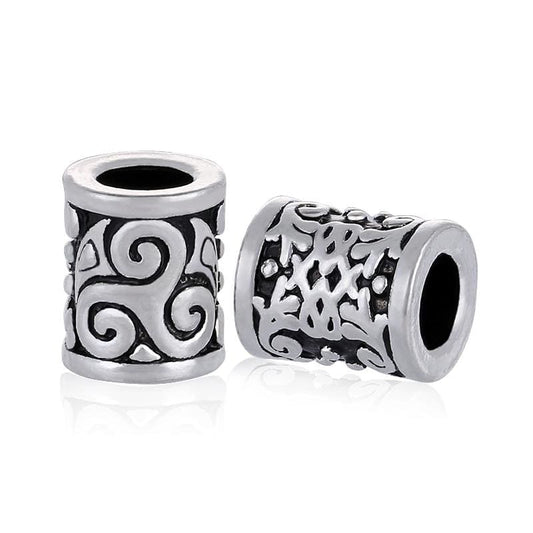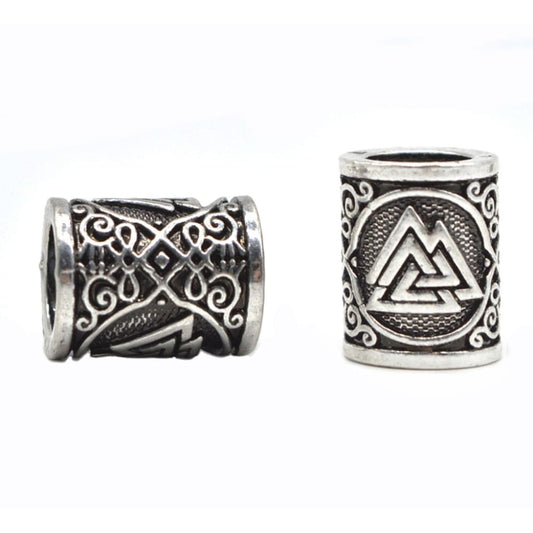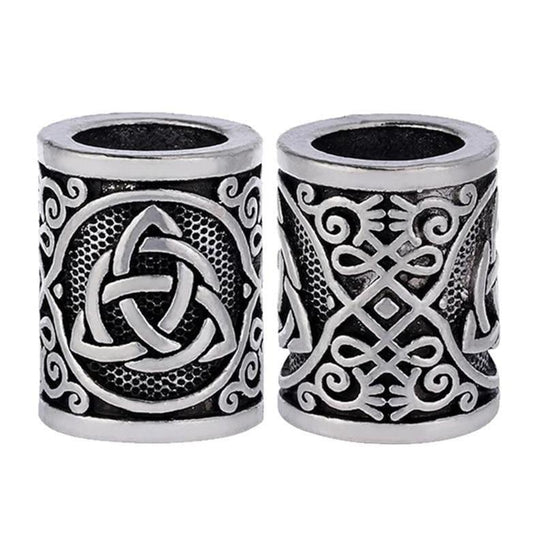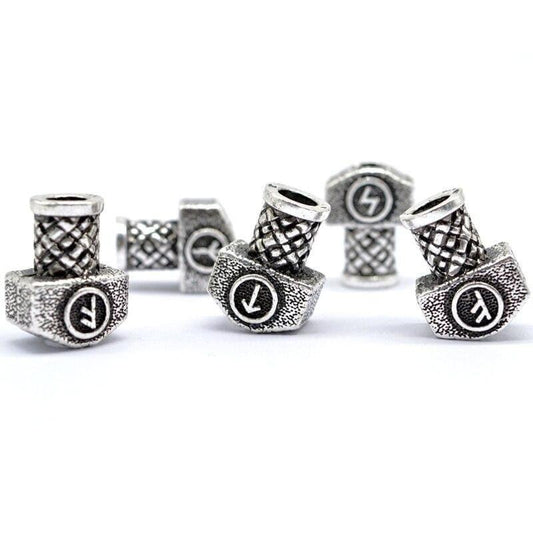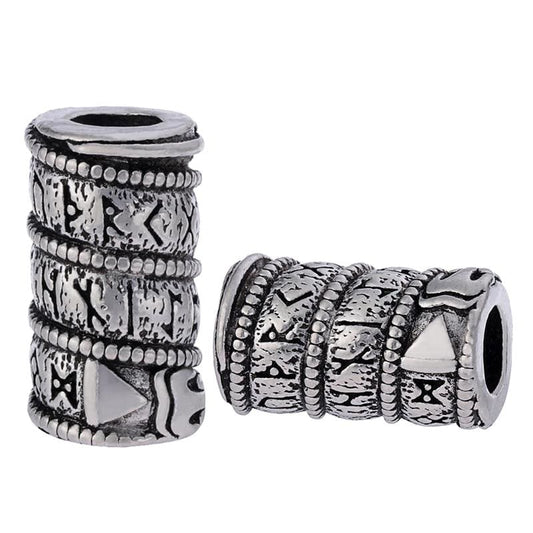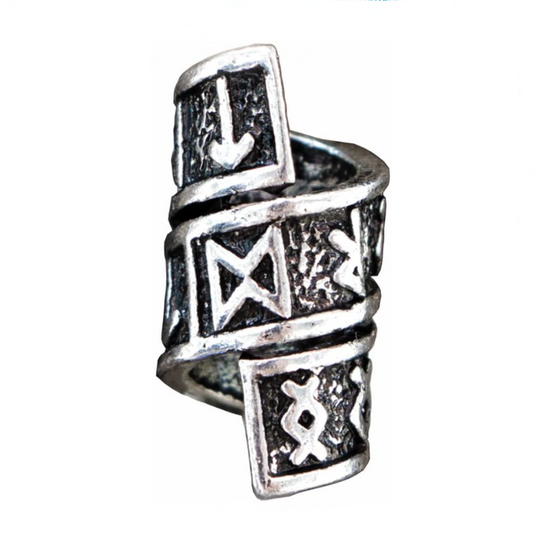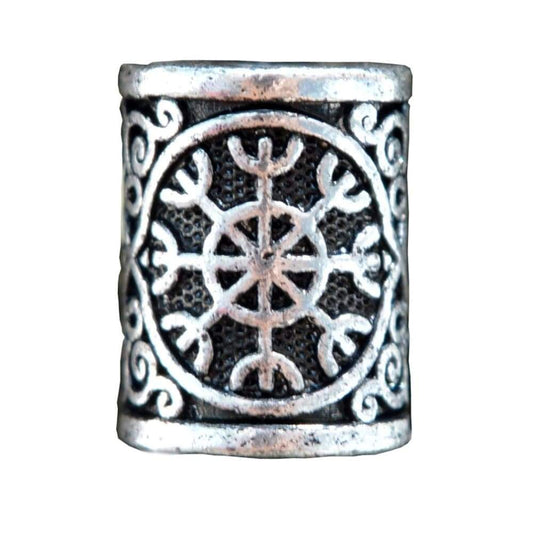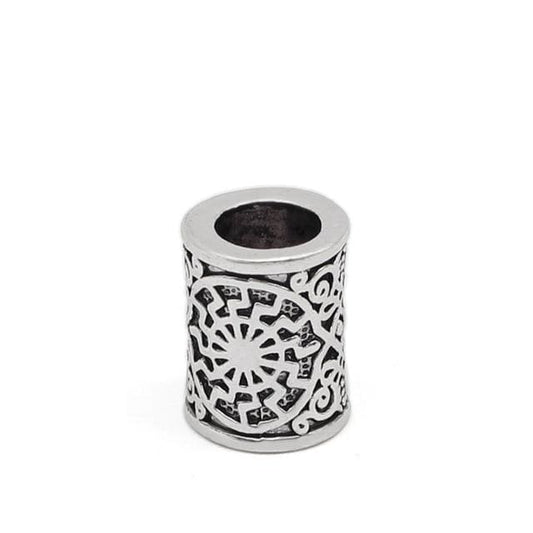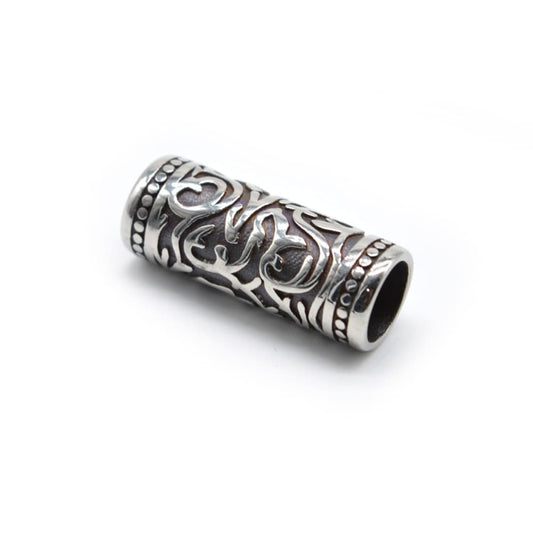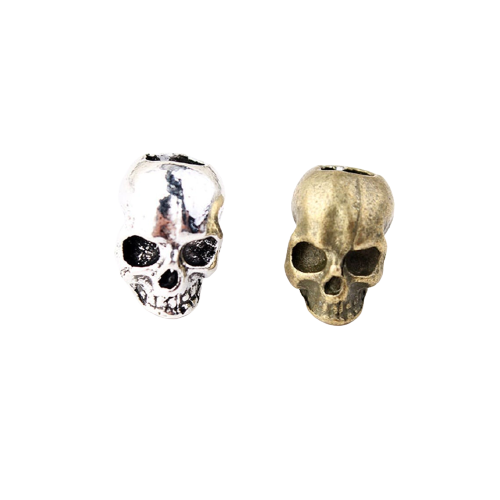Ivar the Boneless also known as Ivar Ragnarsson (Old Norse Ívarr inn Beinlausi) (787-873?1 or 8782), was a Nordic warlord during the Viking Age.
Ivar the Boneless was one of the sons of Ragnar Lothbrok, who together with his brothers Halfdan and Ubbe led the great heathen army.
At the end of the ninth century it was said that "the cruelest of them was Ivar, son of Lothbrok, who everywhere tortured Christians to death", being warlord of an area comprising parts of modern Denmark and Sweden.
The origin of the nickname is not certain. "Ivarr beinlausi" could be translated to "legless Ivar," but "beinlausi" could also be translated as "boneless," since "bone" and "leg" translate into the same word, "ben," in Danish.
Several of the sagas describe him as lacking legs/bones, while a passage in Ragnarssona þáttr (also known as the tale of Ragnar's sons) suggests that it refers to sexual impotence.
Ivar and The Great Heathen Army
In the autumn of 865, together with his brothers, he led the great heathen army in the invasion of England from the coast of East Anglia. His first settlement was quickly and militarily answered by the East Anglians.
The following year, Ivar led his army overland northward and easily conquered York (the Danes called it Jorvik), for the inhabitants of Northumbria were at that time engaged in civil war.
Ivar and his Danes managed to keep York under their power against vain attempts to liberate the city in 867.
Ivar is credited with the murder of the East Anglian king Edmund Martyr in 869. The earliest reference to the story comes from the passion of King Edmund by Abon de Fleury and the Old English adaptation by Aelfric of Eynsham.
From the quotations, we know that King Edmund refused vassalage under pagan rule and was executed in a manner similar to St. Sebastian. The most reliable source speaks of him being tied to a tree and the Vikings riddled him to death with arrows.
Other sources speak of him being executed on the altar of a church, possibly with the ritual of the blood eagle. Ivar and Ubbe were identified as the commanders of the Danes and the murderers of Edmund, and it is unknown whether Halfdan also took part.
Sometime in 869 Ivar commanded the great pagan army of the Danes in England with his brothers Halfdan and Ubbe. He seems to have even emigrated to Dublin (or according to other sources returned from Ireland after ruling for a period of time).
Historical Sources about Ivar the Boneless
According to Ragnars saga loðbrókar, Ivar the Boneless was the youngest son of Ragnar and Aslaug. He is said to have been fair, great and strong, and one of the wisest men who ever lived. Ívar was undoubtedly the advisor to his brothers Björn, Ubbe, Sigurd and Halfdan.
History gives him the role of avenger of his father's death at the hands of Aella of Northumbria, throwing him into a pit of poisonous snakes, but apparently without success until he appeared in front of Aella with the excuse of seeking reconciliation.
Ivar only asked for such land as he could get with an ox's plow and in return swore not to go to war with his kingdom. Ivar then cut the yoke into such thin sheets that it could cover a space where he could build within it a huge fortress (in some old sagas they speak of York and more recent ones of London) which he could claim as his property.
Ivar was known to be the most generous of men. He attracted a great many warriors who he kept at his side when King Aella was attacked by his brothers' Vikings for the second time and captured.
The brothers decided to give Ívar the custody of the king and let him decide his just punishment. Ivar was devoted to Odin and suggested the sacrifice of the blood eagle.
According to popular belief, it meant to open the king's back, lift the ribs from the spine and show his lungs in the form of wings.
In the saga of Ragnar Lodbrok, there is an interesting prequel to the battle of Hastings: it is said that before Ivar died in England, he ordered his body to be buried in a mound on the English shore, so that as long as his bones guarded that shore, no enemy could successfully invade the island.
This prophecy was maintained, according to the saga, until William the Conqueror set foot on English soil, arrived at the burial mound and, after desecrating his grave and realizing that the Viking's body was intact, ordered a pyre to be built and the corpse burned. Thereupon William launched his forces from the mainland and achieved victory.
Ivar's Dynasty
Ivar is credited with founding the House of Ivar or Uí Ímair, a dynasty that from the mid-9th century to the 10th century ruled Northumbria from the capital of York (Jórvik) and dominated the Irish Sea region from the kingdom of Dublin.
Their presumed descendants, the House of Godred Crovan, ruled as kings of Mann and other Viking territories in the Northern Isles from the 11th to the 13th century, although they acted as vassals of the kings of Norway most of the time.
Ivar's Death
Ivar disappears from all historical records in 870. His ultimate fate is uncertain, although Ivar is assumed to be Ímar himself, the first king of the Uí Ímair dynasty, whose death is cited in the Annals of Ulster in 873.




